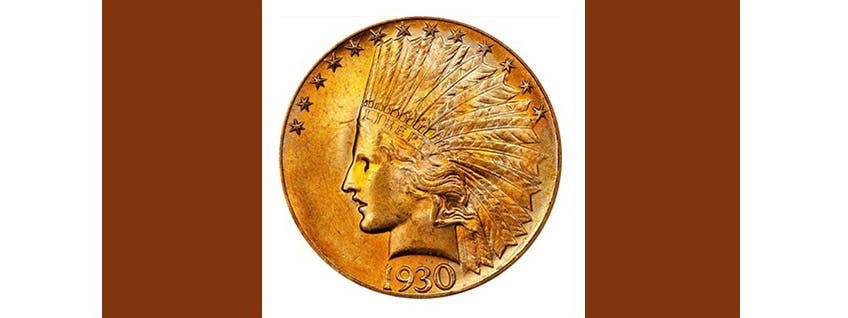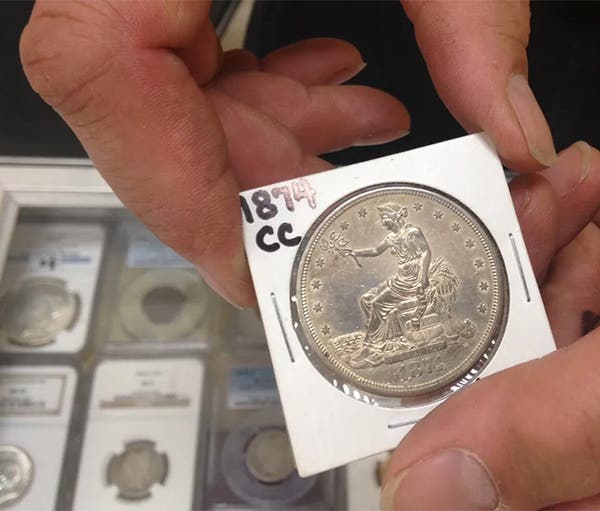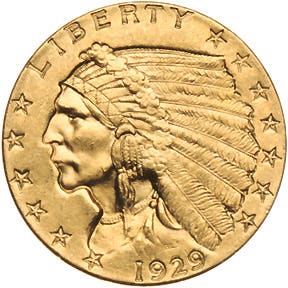Clinic: Proof coins show sharp, knife-like rims
If I encounter what appears to be a proof in circulation, how can I tell if it is a proof or a prooflike coin?
By: Richard Giedroyc
If I encounter what appears to be a proof in circulation, how can I tell if it is a proof or a prooflike coin?
Start with the mintmark. If it doesn’t have an “S,” that is most likely all you will need to know. All proof U.S. coins of the circulating denominations have had the “S” mintmark since 1968. If that doesn’t do it, proof coins have a knife-like rim, while prooflike coins are business strikes with a more gently sloping rim.
I’ve seen gold coins identified by their fineness, while jewelry is identified by carats. How can I express jewelry in fineness?
Pure gold jewelry, if it exists, is 24 karat. Divide the carats expressed on the jewelry by 24 karat to determine its decimal purity or fineness. As an example 14 karat divided by 24 karat is 0.583 fine gold.
What is the most popular theme for collecting coins?
Silver dollars, more specifically Morgan silver dollars, are most likely the most popular area of coin collecting. In general, collectors prefer larger diameter coins over their smaller diameter counterparts. Regarding people collecting very modern coins, the interest appears to be in the flashy issues with popular themes such as sports – in other words, “bling.” My comments do not take into account people accumulating rather than collecting coins into an assembled collection.
What is the most popularly accumulated or hoarded coin?
No one has any statistics on this subject, but from personal observations I would expect it to be the Lincoln cent, especially wheat cents. I meet a lot of non-collectors who tell me there is a bucket, glass jar, or water jug at home filled with these coins. Once in a while I get the opportunity to challenge the shock absorbers on my car by buying these hoards.
In the July 23 issue you had a comment about the recall of Silver Certificates at face value. I recall that there was a small premium on the bills because of a higher silver value. Wasn’t it somewhere around $1.29 to $1.36? I had a couple dozen $1 certificates and remember choosing to keep them rather than take advantage of the premium on the recall.
It wasn’t truly a recall. On June 24, 1968, the notes stopped being exchangeable for silver from the government. Unredeemed notes remain legal tender. Premiums certainly were at the numbers you have cited for each $1 note because the bullion received for the note could then be sold for the free market price of silver, which peaked at $2.56 an ounce in 1968. The $1.29 and $1.36 numbers you cite are also very close to the prices at which the silver in American coins has a value equal to face value. In the case of the silver dollar it was $1.2929 an ounce and for the subsidiary coins, dime to half dollar, it was $1.37. The notes were redeemed at the official price and that is what made such a profitable opportunity for collectors and dealers when the free market price exceeded those levels.
Wouldn’t it have made more sense to continue issuing Silver Certificates and suspend Federal Reserve Notes?
The value of Silver Certificates in circulation was limited to the amount of silver bullion in Treasury vaults. When people redeemed a certificate for its bullion value the note lost its backing. For this reason it had to be destroyed, not recirculated as can a Federal Reserve Note. The danger, of course, is that the government can turn on the printing presses and continue to “make” money out of nothing when it is issuing unsecured paper notes (Likewise for our copper-nickel coinage.). Unfortunately this has proved to be a reality worldwide, since there is no government currently backing its paper money with anything other than trust in that government and the domestic economy. Could the financial deck of cards collapse worldwide? Of course. Look at the 19th century wildcat banking in the United States; early 20th century Austria, Germany, and Hungary; or at late 20th century Yugoslavia as examples of what can happen.
Since unsecured paper money can be used to create more money artificially, wouldn’t it make more sense to issue all of our currency in precious metal coinage exclusively?
Even the gold and silver content in our former specie coinage has been manipulated due to economic and political situations. The standard weight of gold used in U.S. coins was reduced on June 28, 1834. On Feb. 21, 1853, fractional denomination silver coins were made subsidiary by reducing their weight. Weights changed again through the Law of 1873. The Coinage Act of 1965 was likely the most sweeping of all, since this ended specie coinage with the exception of debasing the half dollar. These are just a few examples of what can happen. There is no foolproof system.
Why was the silver in the half dollar reduced but not eliminated in 1965?
The silver in the half dollar was reduced from 90 to 40 percent in 1965 as a result of a political compromise between Congress and President Lyndon B. Johnson. This compromise resulted in the Coinage Act of 1965. The 1965 to 1970 half dollars have an outer layer of 0.800 fine silver bonded to an inner core of 0.210 percent silver, resulting in a purity of 40 percent silver composition.
Since silver was eliminated from our circulating half dollars in 1970, why did the Mint begin issuing the bullion American Eagle in 1986?
The word “bullion” is the key. These are not coins meant for use in commerce. The United States had watched countries all over the world issue bullion coins meant to be traded for their intrinsic rather than for their face values since the introduction of the South African Krugerrand in the late 1960s.
More Coin Collecting Resources:
• Order your 2013 Yellow-Bellied Sea Snake Coin Set today!
• Buy new coin price guides, get the ebook free! Learn more.
• IT’S HERE! Order the 2014 North American Coins & Prices.
• Get the 2012 Coin of the Year – limited quantities remain!
• See what guides and supplies our editors recommend for keeping up with your collection.








